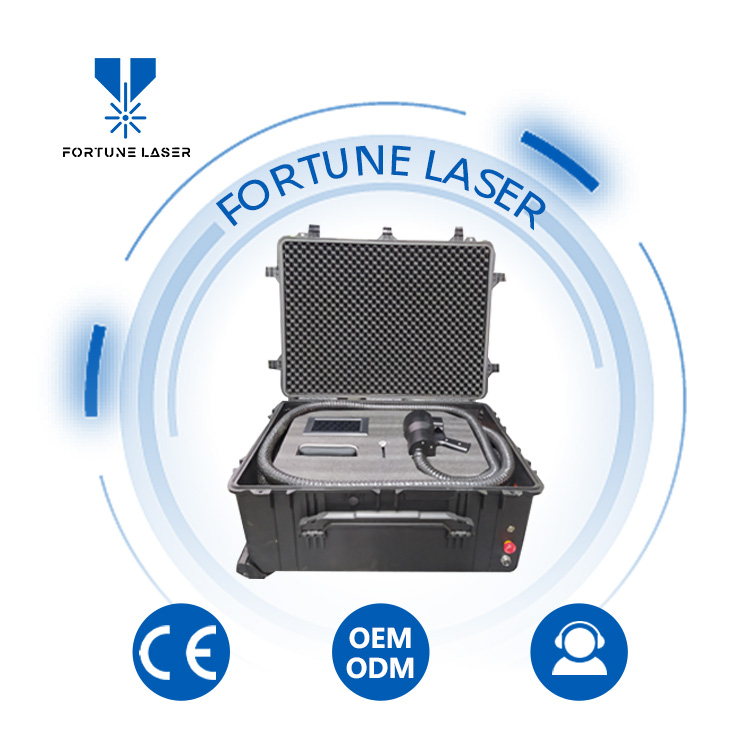Vegetation management is a constant problem for modern infrastructure. Keeping trees trimmed is very important for roadside safety, power lines, and big farms. Traditional ways work but come with risks. They also cost a lot in labor and can harm the environment. Because of this, people need a better, high-tech way to handle hard-to-reach obstacles.
That’s where the laser tree trimmer comes in. This new tool changes how we trim trees and maintain utilities. It works from a distance and cuts with great accuracy. It also makes the job safer for workers. This guide will explain how laser tree trimming works, its main benefits, the costs involved, and what the future might hold. It will help you decide if this technology is right for you.
What is a Laser Tree Trimmer?
A laser tree trimmer marks a significant technological leap in utility maintenance and arboriculture. It introduces a method of cutting that is remote, precise, and fundamentally different from any previous approach.
Core Definition and Function
A laser tree trimmer is a portable, ground-operated device using a focused laser beam to cut and sever tree branches from a distance. Unlike chainsaws that rely on mechanical force, the laser works by concentrating intense light energy onto a single point. This energy vaporizes the wood fiber, achieving a clean cut without physical contact. The system enables live, non-contact work, a critical function for maintaining infrastructure like the power grid without service interruptions.
Alternative Industry Names
The novelty of this technology means it is known by several names, all highlighting its core function of remote obstacle removal. These include:
-
Laser Cannon Tree Cutter
-
Portable Laser Obstacle Cleaning Instrument
Core Laser Technology and System Features
The effectiveness of a laser tree trimmer stems from its ability to harness and control high-energy light. Its design integrates advanced laser physics, powerful optics, and portable engineering to create a tool that is both powerful and accurate.
How Laser Cutting Works
The cutting action is based on a process called laser ablation. The system employs a high-power fiber laser to generate a coherent light beam. This beam is directed through lenses that focus it into a tiny, powerful spot. When the beam strikes a branch, the light energy instantly converts to thermal energy, vaporizing the moisture and wood fiber. This process disintegrates the wood layer by layer. An integrated cooling system manages the heat produced by the laser generator, ensuring stable, consistent, and effective operation.
Key System Features
The design is centered around three critical capabilities that differentiate it from any traditional tool: long-range operation, portability, and precision targeting.
-
Long-Range Operation: Most industrial models can work from 10 to 300 meters away (about 30 to 980 feet). The laser’s focus changes automatically using special lenses. This lets operators stay far from dangers like power lines, rough ground, or busy roads. They can still reach branches high up in the trees.
-
Portability: The system is made for use in the field. It comes apart into smaller, easy-to-carry pieces. These include the laser generator, a rechargeable battery, a small cooling unit, and an optical head on a tripod. All parts are kept in tough cases. A regular utility vehicle can carry them. A small team can set everything up quickly.
-
Precision Targeting: Accuracy is paramount. Operators aim using a high-definition, long-range camera integrated with the laser optics. A live video feed with powerful zoom provides a clear view of the target. A low-power, visible aiming laser projects a dot onto the branch, confirming exactly where the invisible cutting beam will fire.
Key Benefits of Laser-Operated Tree Trimming
The adoption of laser tree trimmers is driven by a powerful combination of advantages. These benefits address long-standing challenges in safety, efficiency, and operational flexibility.
Enhanced Worker Safety
The paramount benefit of laser trimming is the dramatic improvement in operator safety. Traditional line clearance is one of the most hazardous jobs. Lasers mitigate the primary dangers by:
-
Eliminating Electrocution Risk: Operators work from a safe distance, hundreds of feet from energized power lines.
-
Removing Fall Hazards: The technology makes it unnecessary for workers to climb trees or use bucket trucks, negating the risk of life-threatening falls.
-
Reducing Physical Strain: By replacing heavy, vibrating tools, laser trimming reduces the risk of cuts, strains, and other injuries from manual labor.
Increased Operational Efficiency
While a single laser cut may take longer than a chainsaw, the overall job-to-job efficiency is superior in many scenarios. This is achieved by streamlining the entire workflow.
-
Minimal Setup Time: A small crew can set up the system, perform cuts, and move to the next location in a fraction of the time it takes to position a bucket truck.
-
Weather Resilience: Laser operation is generally unaffected by moderate wind or light rain, conditions that would halt climbing or aerial lift work.
-
No Power Shutdowns: The ability to perform live-line work prevents service interruptions and eliminates the complex coordination required for planned outages.
Environmental Friendliness
Laser trimmers offer a greener alternative to conventional equipment. The systems are quiet, emission-free, and clean.
-
Zero Carbon Emissions: Powered by rechargeable batteries, the systems produce no direct emissions, unlike diesel trucks or gas chainsaws.
-
Minimal Noise Pollution: The near-silent operation is ideal for use in residential areas or other noise-sensitive locations.
-
No Chemical Pollutants: The technology eliminates hydraulic fluids, engine oil, and bar lubricants, preventing potential spills and contamination.
High Flexibility and Access
The portable nature of laser systems unlocks access to locations that are difficult for traditional machinery to reach.
-
All-Terrain Accessibility: A laser crew can carry the equipment on foot into dense forests, up steep slopes, or across wetlands where a truck cannot go.
-
Reduced Ground Impact: With no heavy vehicles, there is no damage to sensitive landscapes, lawns, or soft ground.
-
Overcoming Obstacles: The long-range beam easily reaches over fences, rivers, and other barriers that would stop conventional crews.
A Detailed Breakdown of Laser Tree Trimmer Costs
The primary barrier to adoption is the significant initial capital investment. The cost varies widely based on power, range, and durability.
Initial Purchase Costs
These are industrial-grade tools, and their pricing reflects the advanced technology within.
-
Entry-Level Systems ($7,000–$10,000): They have lower power, from 500 to 1,000 watts. These are good for easier jobs that don’t need much range.
-
Mid-Range Industrial Models ($10,000–$20,000): This is the most popular choice for utility companies. They offer strong power, between 1,500 and 2,000 watts. These machines have a long range and tough parts for daily use.
-
High-End Industrial Systems ($20,000+): They have the highest power, over 2,000 watts. These come with smart features like AI to help aim. They also have the best lenses for fast and precise work.
Key Cost Drivers
Several factors determine the system’s final price:
-
Laser Power (Wattage): The single biggest cost driver. Higher wattage means faster cutting and the ability to sever thicker branches.
-
Operational Range & Optics: High-quality lenses and collimators needed to maintain a focused beam over hundreds of meters are expensive.
-
Durability & IP Rating: Rugged, field-ready systems with shock-proof components and high IP ratings for water and dust resistance cost more.
Operational and Maintenance Expenses
Beyond the initial purchase, total cost of ownership includes ongoing expenses, which are generally lower than for traditional equipment.
-
Energy Consumption: The cost of electricity to recharge battery packs is minimal compared to daily fuel for diesel trucks and gas chainsaws.
-
Scheduled Maintenance: Simple upkeep includes cleaning optics, checking coolant levels, and inspecting cables.
-
Consumables: The primary consumable is the protective lens that shields the main optics from smoke and debris. These require periodic replacement.
Cost-Benefit Analysis: Laser vs. Traditional Trimming
Choosing between methods requires a thorough analysis. While the initial cost is high, long-term advantages can offer a compelling return on investment.
-
Initial Investment: The laser system’s cost is comparable to a new bucket truck ($100,000-$250,000+). However, it can often replace the need for a truck, especially in difficult terrain.
-
Labor Costs: Lasers enable smaller crews (typically 2 people vs. 3-4 for traditional methods) and reduce the need for highly-paid, high-risk specialized labor, leading to significant daily savings.
-
Operational Speed: Lasers excel at targeted, remote, high-risk cuts. Traditional methods are faster for bulk, ground-level clearing. They are tools designed for different, specific applications.
-
Safety and Insurance: Line clearance work has extremely high insurance premiums. By removing the primary risks, laser technology can directly reduce these costs. This, combined with avoiding the indirect costs of accidents (fines, litigation), provides a massive financial incentive.
-
Environmental Compliance: The quiet, emission-free operation of lasers avoids costs associated with noise ordinances and emissions standards.
Future Outlook: Pricing Trends and Technology
The field of laser tree trimming is still early in its adoption curve, but its trajectory points toward lower costs, enhanced capabilities, and wider use.
-
Anticipated Price Reduction: As with most technologies, costs will fall. Advancements in fiber laser manufacturing, driven by demand in other industries, will lower the cost of core components. Increased competition will make systems more accessible.
-
Technological Advancements: The next generation will be smarter and easier to carry. It will use AI to find targets on its own. Cutting paths will be automatic. The systems will be smaller but more powerful. This is possible because batteries and cooling parts will get better.
-
Market Adoption: Wider use will speed up because of outside factors. Many companies have “Vision Zero” safety goals. Governments also offer grants to make infrastructure stronger. Rules about safety are getting tougher too. All these things will encourage groups to choose safer, tech-based solutions.
Conclusion: Is a Laser Tree Trimmer a Worthwhile Investment?
For organizations tasked with managing vegetation in high-risk environments, the laser tree trimmer is a sound and forward-thinking investment. It represents a clear trade-off: a high initial cost for profound long-term gains in safety, efficiency, and capability.
The laser trimmer is not a universal replacement for all traditional tools. It is a specialized instrument that provides an unparalleled solution for the most dangerous and difficult jobs. For large utilities and specialized contractors, it is an investment in a new model of work—one that prioritizes safety through technology. While a niche tool today, its adoption is set to grow. For those looking to lead in safety and innovation, the laser tree trimmer is a clear glimpse into the future of vegetation management.
Post time: Jun-06-2025











